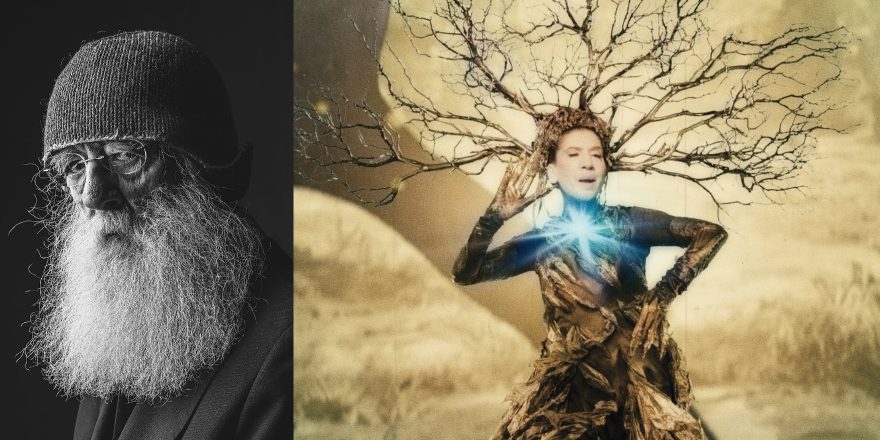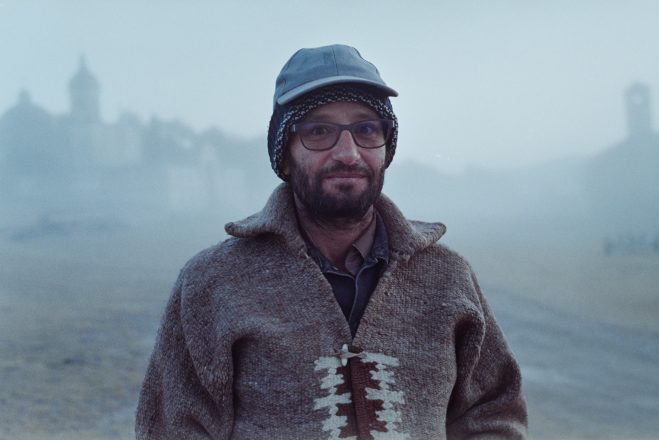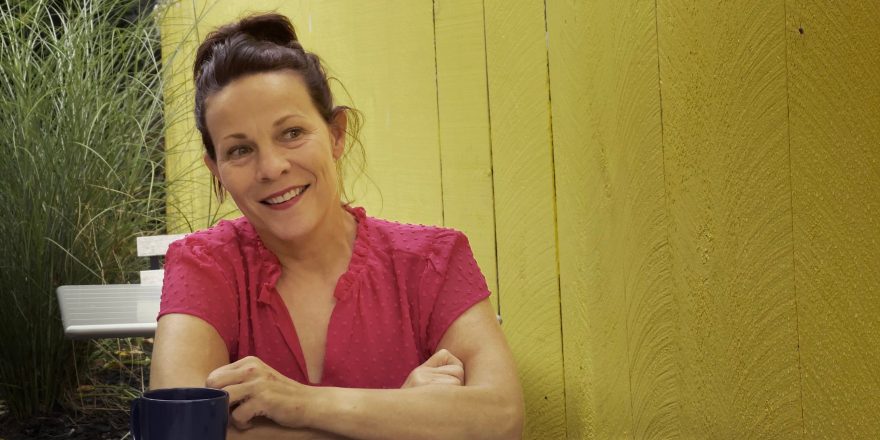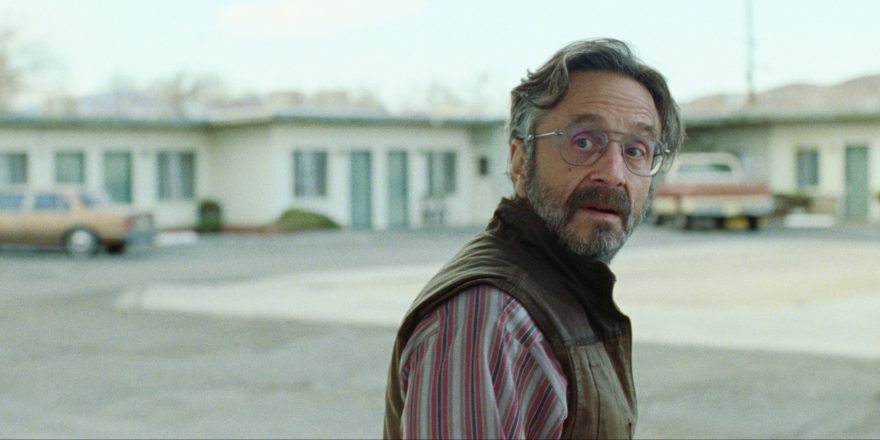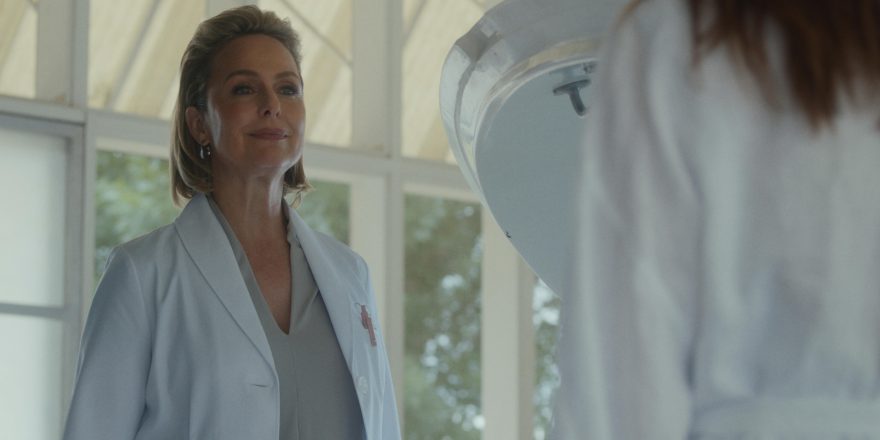Three Great Things is Talkhouse’s series in which artists tell us about three things they absolutely love. To mark the October 13 release in theaters of Godfrey Reggio’s new film, Once Within a Time, “an anarchic comedy told without words, a sensory feast to be felt through art and music,” the legendary director of Koyaanisqatsi shared the things that make up his life. — N.D.
My Family and Early Life
All things go better in threes. I have a tattoo of the number three on my body, I do all my films in threes, and three, six and nine are the numbers of the universe. So asking me for three things I love plays right into my modality. These three things all have a connection and end up in the same place. So, let me start …
The first thing I want to focus on is my family and the beginning of my life, up until my exclaustration, when I was thrown out of the cloister. I went in at 14 and got thrown out at 28; all endings lie in beginnings. My book of life is full of blood. I’m a seventh generation New Orleanian. My family now is 11 generations. I’ll try to make this as staccato as possible, to keep the pain quotient to a minimum.
One of my ancestors is Francesco Maria de Reggio, from the house of Este, a relative of Lucrezia Borgia, who came to New Orleans in the 1740s as a mercenary fighting for the King of France. He headed the first parliamentary government of our city, and rewrote the Code Noir (as he felt it was too liberal), which said Black people could be treated like chattel. His great grandson, Pierre Gustave Toutant Beauregard, whose mother was a Reggio, fired the first shots of the American Civil War. So there’s blood on my family. I’m not blaming them, but they hardly know who they are.
So, that history led me to leaving the world. When I was four years old, my mother thought I was smart, so she sent me to Robert E. Lee Kindergarten. I got thrown out for wasting time, annoying others and organizing the kids to do bad things. So my daddy took me every day with him to the bar, where he sold insurance, and put me on the bar and taught me the boogie-woogie, the Burgundy Street Blues, the can-can, poetry. I would be his monkey on the stage. I had a little tin cup and everybody would put in the money. So then my mother put me back in the school and I went to Mater Dolarosa, mother of sorrows. I went to Penance Hall every day. I wrote the rosary many thousands of times. And then in the seventh or eighth grade, I met these young Christian monks who were full of joy and love. I wanted to be like them, so my father let me leave home to live with them. At 14, I went from La Dolce Vita, New Orleans to the Middle Ages, where we lived by the bell, not the clock.
I became a Christian brother for 14 years and had my final vows at 25. Then I started to work with street gangs, because all brothers take special vows – in addition to poverty, chastity and obedience – and ours was to teach the poor. I taught street gangs in Santa Fe, but I had a big mouth, so the Superior General of the Brothers called me in and said, “It’s time for you to leave now, brother. Go back to the world. Do whatever you want to do, but we don’t want you here no more.”
Cinematic Poetry
The second of my things is cinematic poetry. During the time when I was exclaustrated, I saw the film Los Olvidados by Luis Buñuel, or The Young and the Damned or The Forgotten Ones. It was not entertainment, it was like a spiritual experience for me. It was so meaningful. I bought a 16 millimeter copy and played it on the walls of the adobe barrio.
So that inspired me. I can’t do what Buñuel did, but I saw that cinema could change people’s lives. It certainly changed mine. I started making Koyaanisqatsi (and then the Qatsi trilogy) because, to me, language – except that of primitive people who don’t have the written language – did not describe the world we lived in. So I wanted to make a film without words, a film where the music – which does not go through metaphor – went directly to the soul of the listener. The films I make are a construction of the visual and the aural, that becomes the image. One without the other is like a dawn without the day.
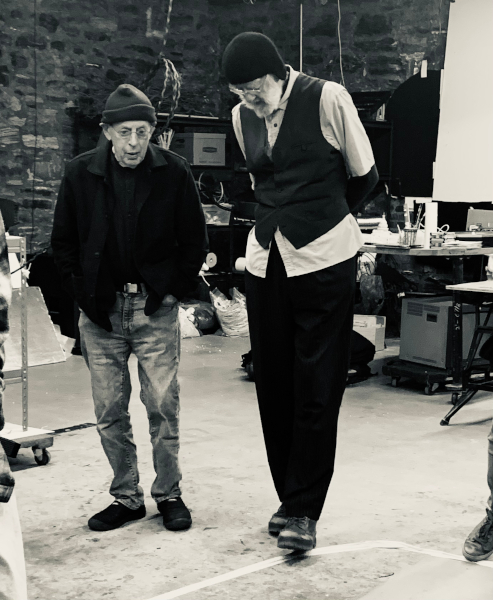
I listen to my films all the time because they are new every time. An artist, if they’re real, lives many lives, dies many deaths. So that’s what I do. I look at all these films and they turn me on and it takes all my energy to do them. I’ve done five features now, with Once Within a Time being the latest. It is a film I wanted to make before Koyaanisqatsi. After seeing Buñuel’s film and working with street gangs, I said, “Gee whiz, why don’t I make one?” I wanted to make a film that was linear and non-linear at the same time, clear and ambiguous at the same time, but I didn’t know how to do it without language. Now I’m a thousand months old, though, I know how to do it.
The Connectedness of Everything
I’ve learned that everything in life is connected, and not just for me – for everybody. As a young Christian brother, I learned the value of “one-pointedness”; in Sanskrit, it’s called ekagrata. The master of that in film is Sir Alfred Hitchcock. He said if you wanted the immediate attention of any person, just put a dot on the screen. His work is full of dots and my new film, Once Within a Time, is full of dots too. I also learned as a brother how to have focused discipline and live in a rooted future. I knew that my behavior was more important than my thought. Let me explain. Descartes said, “I think therefore I am.” I don’t buy that. Speaking is not the handmaiden of thought, thought is the handmaiden of speech. Brodsky, one of my favorite writers, says, “Speech gives meaning to the nothingness of the universe.” In that sense, I learned that from the brothers.
I learned from my father, too. When I was young, I stuttered terribly, so my father put me on the stage and said, “You’re an actor, a natural performer. Make an asset out of your liability.” I’ve learned in film to take all the liabilities and make them an asset, squeezing things, seeing them upside down, changing the color. I’ve learned all these things are connected. I learned that if I was going to make a film, especially Once Within a Time, I would have to make it with the right brain, the brain of dream, the brain of the unknown, the vivid unknown, not the rational left brain of syllogism, logic, law, order. I also learned through the Polish proverb “Begin and the work shall show you how.” I leap and my net appears. I’ve learned from the mythology of the lioness: when her cubs are born, they’re stillborn and she has to roar them into life. So I took that as a metaphor. My films are an attempt to roar people into the life they have, because that which is most present is least seen. I’m not trying to tell them anything other than what they can already see, but our eyes don’t see it. I feel our ears can see it better.
So these are my little stories, one, two, three. All the best things are said in silence.
Featured image: (left) Godfrey Reggio, portrait by Asa Mathat; (right) a still from Once Within a Time. Images courtesy Godfrey Reggio and Oscilloscope Laboratories.



